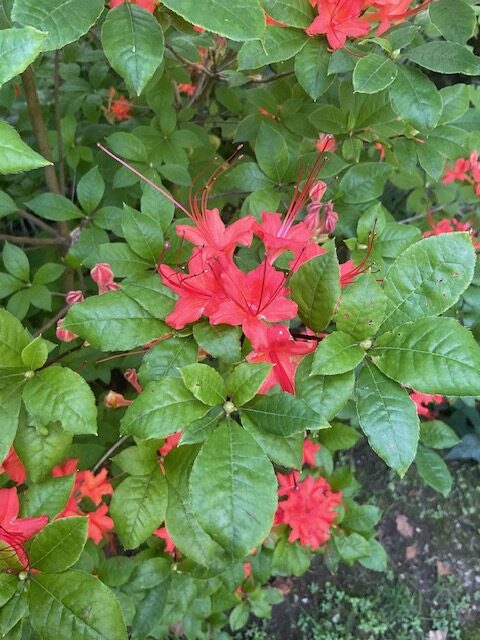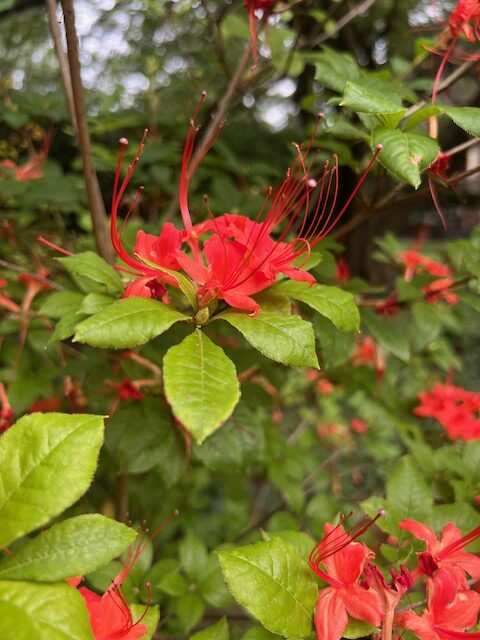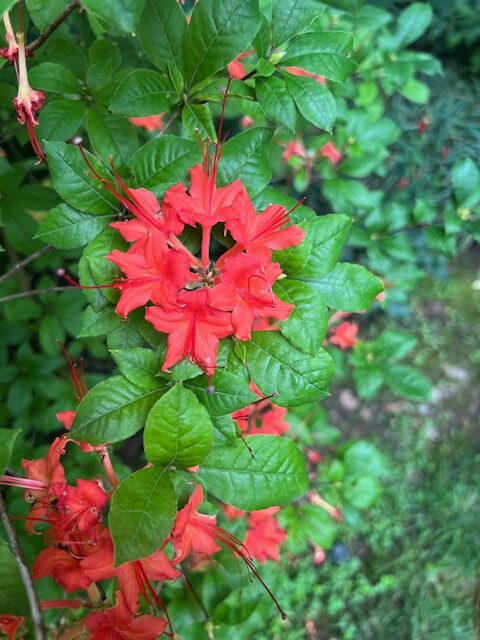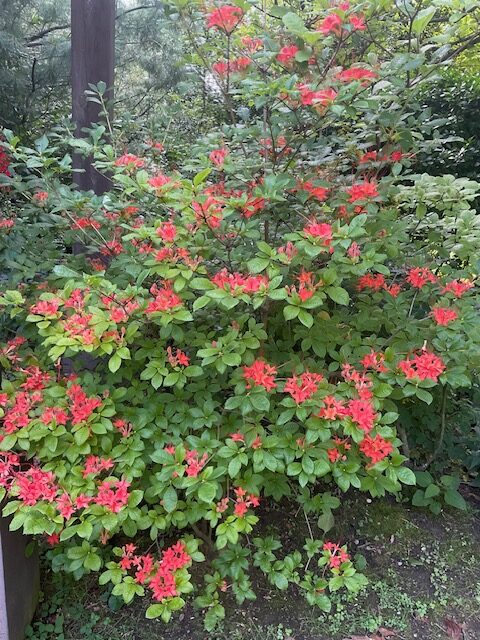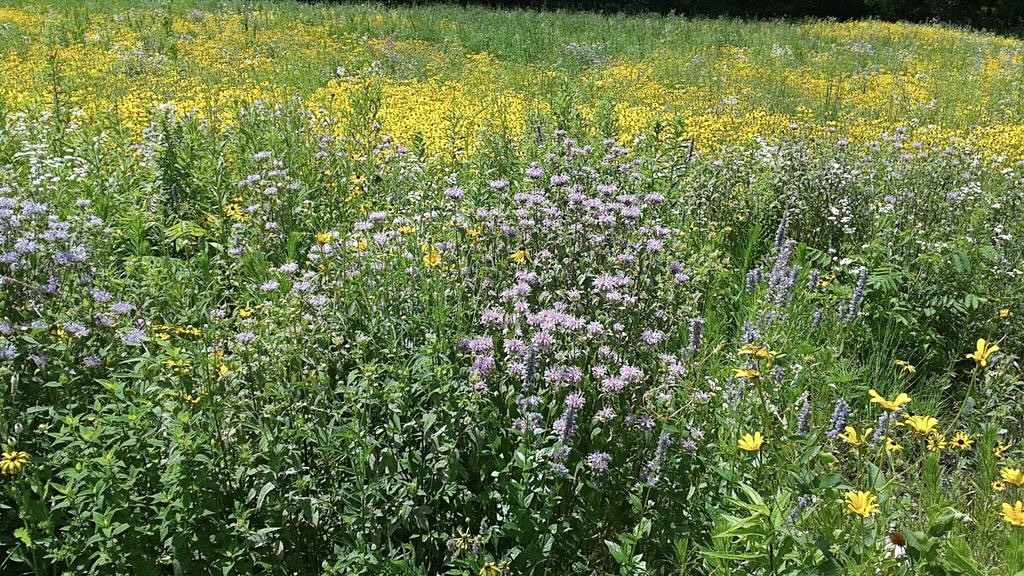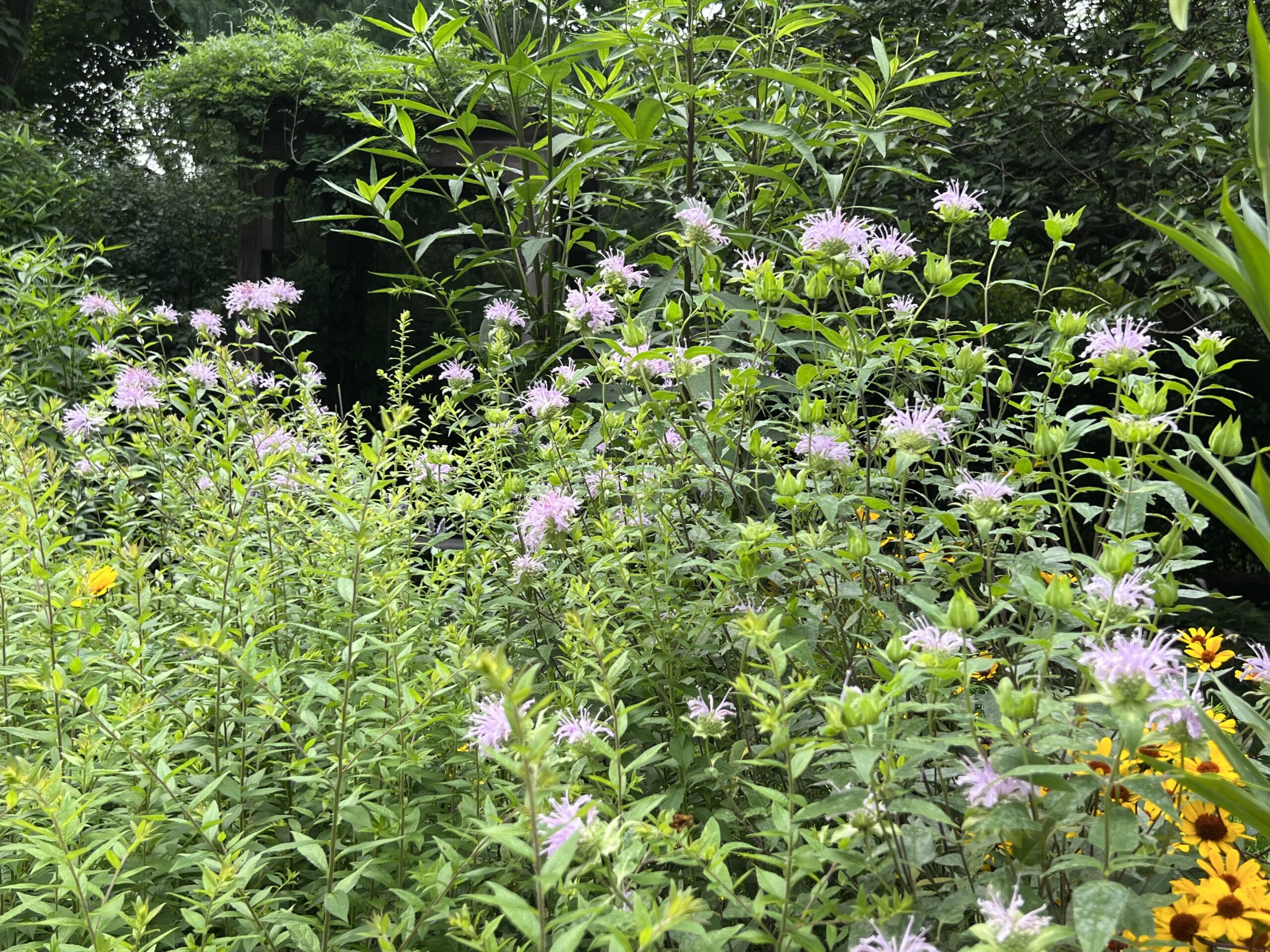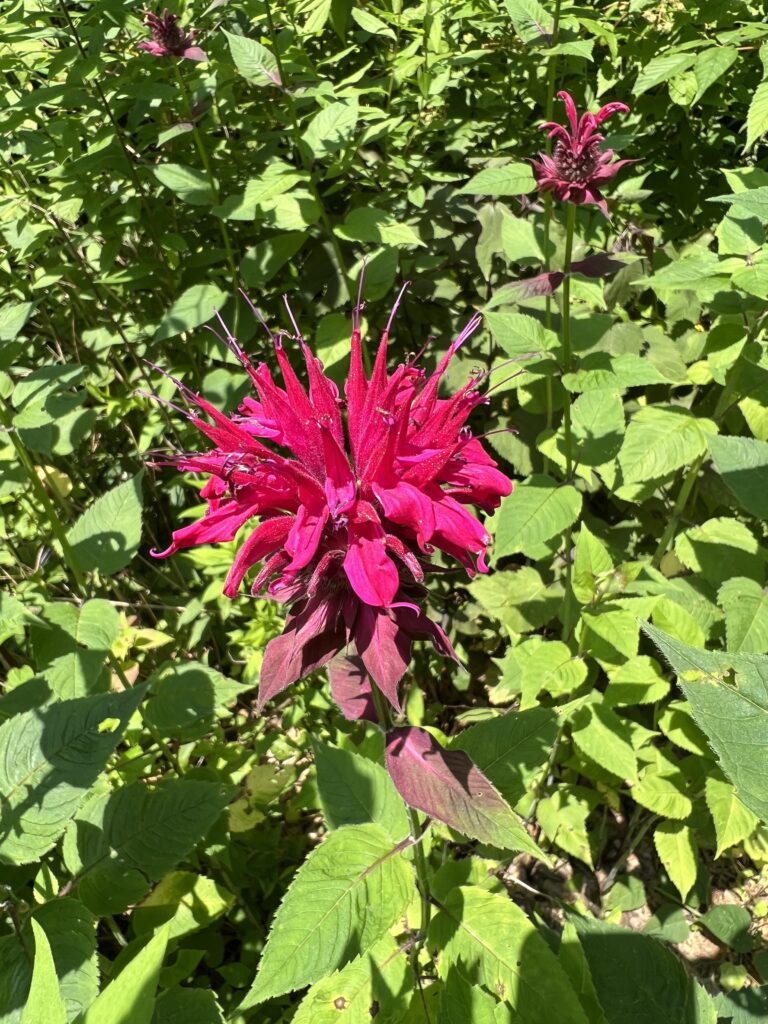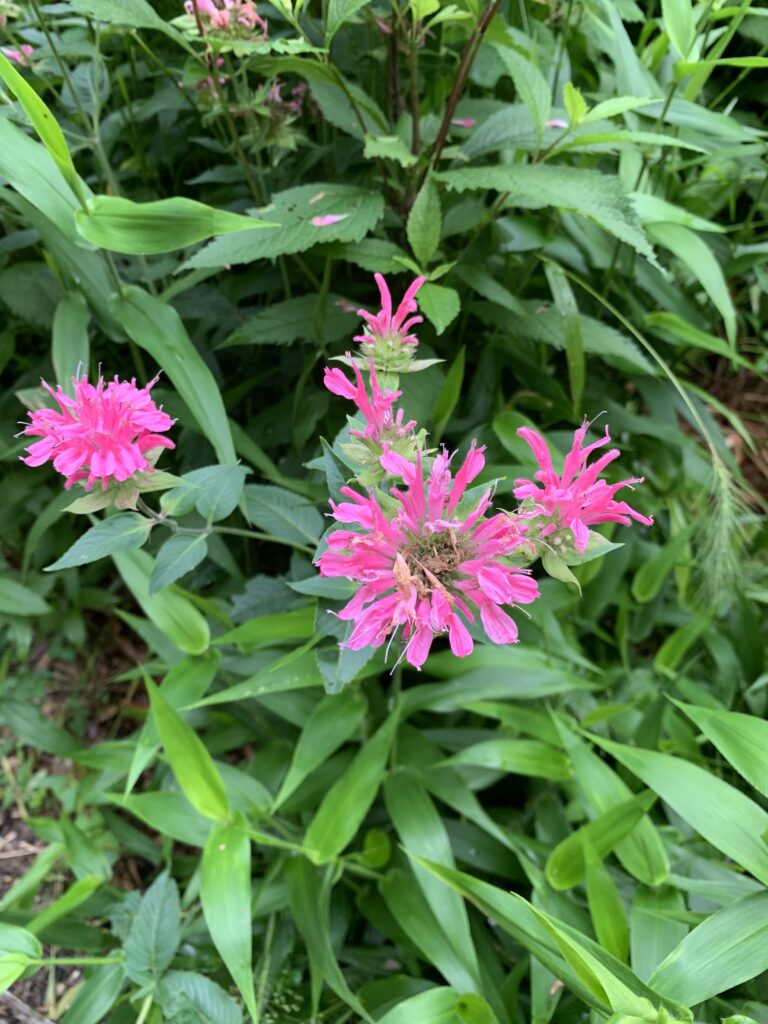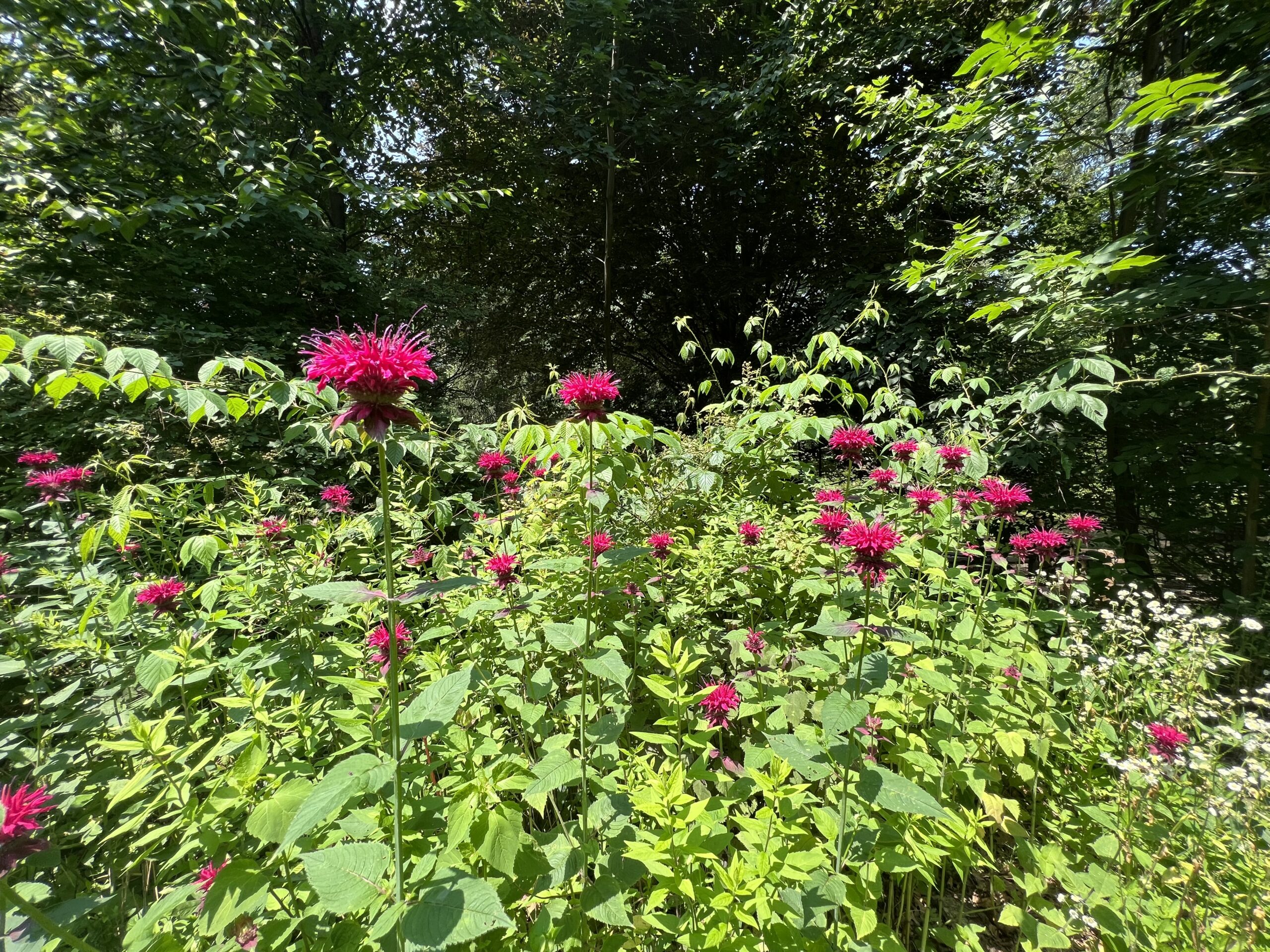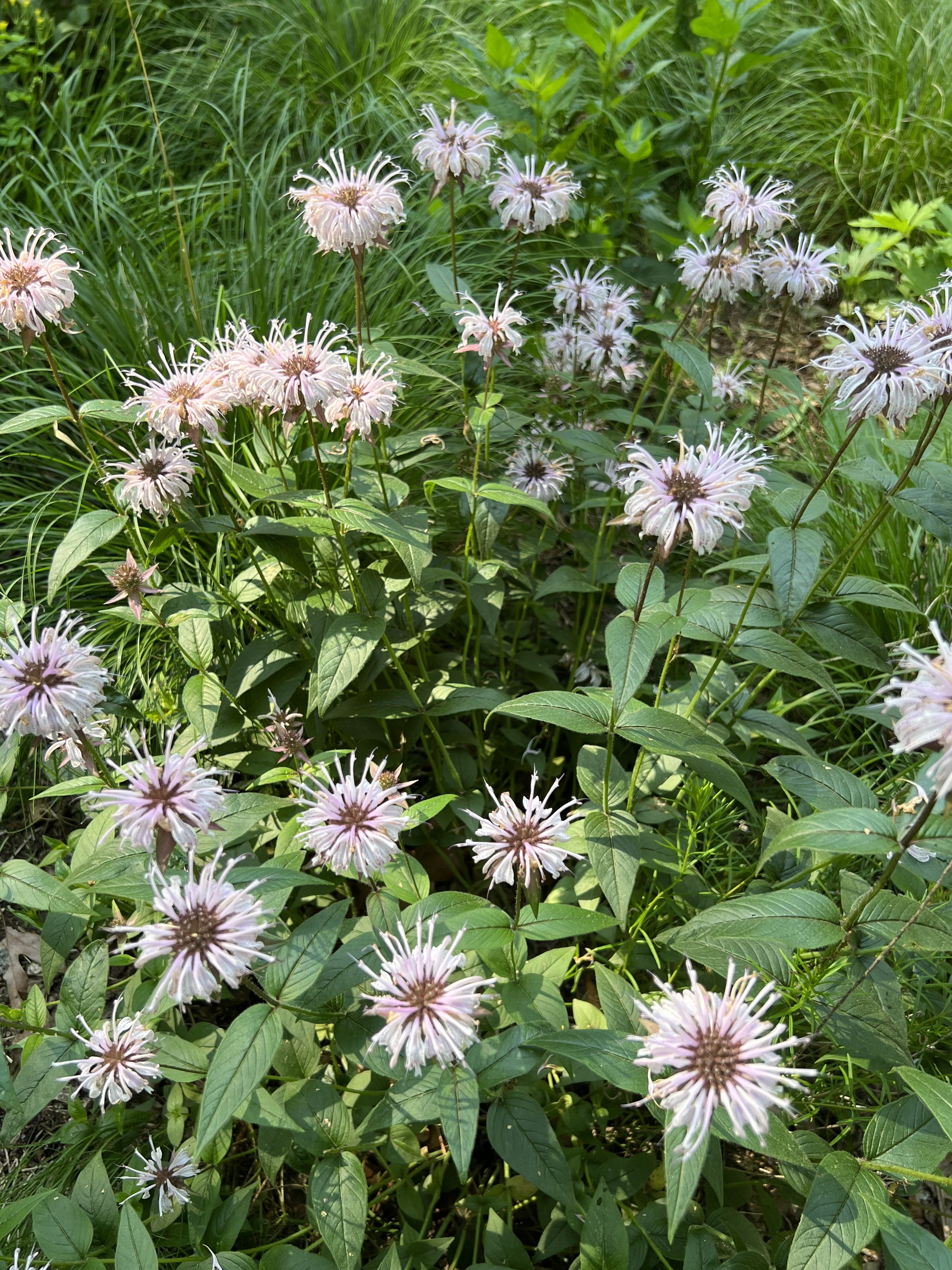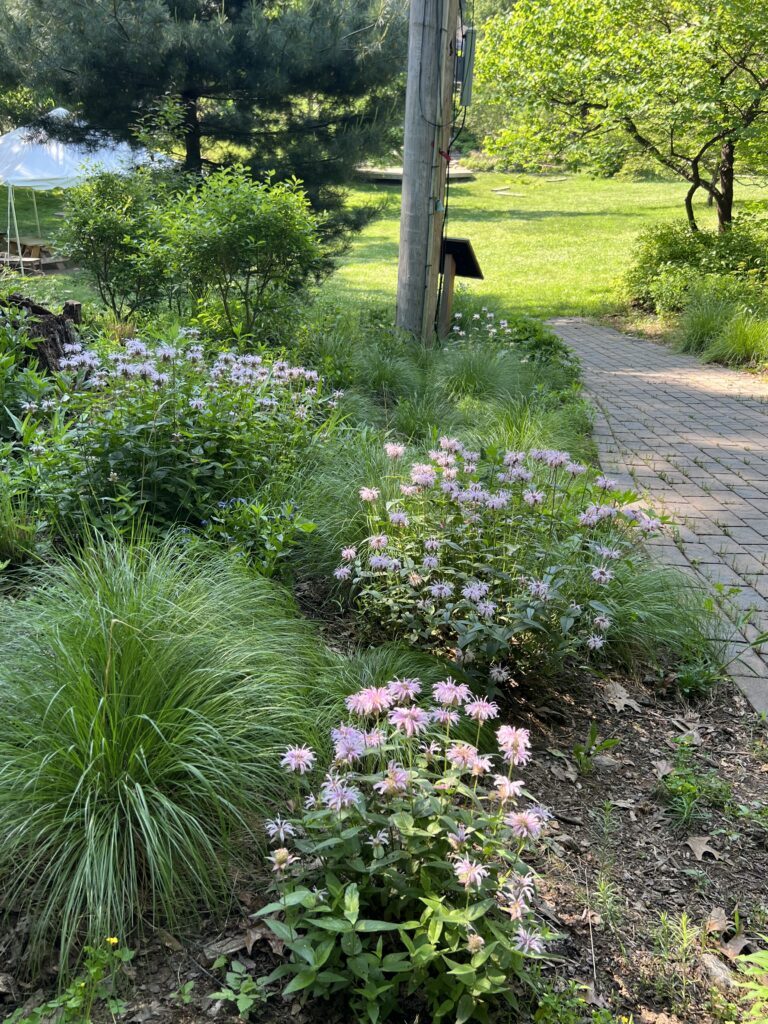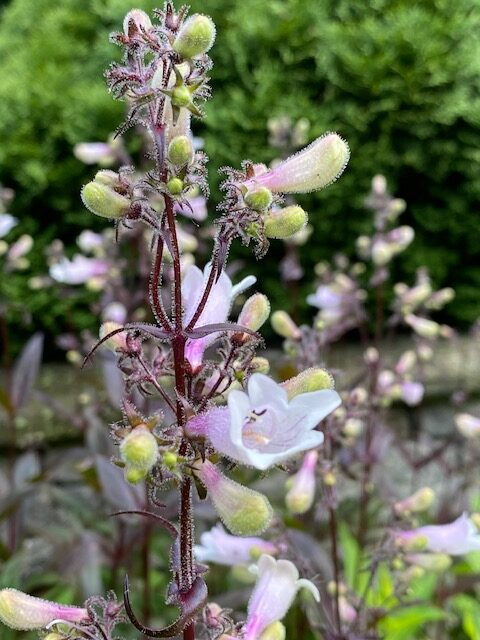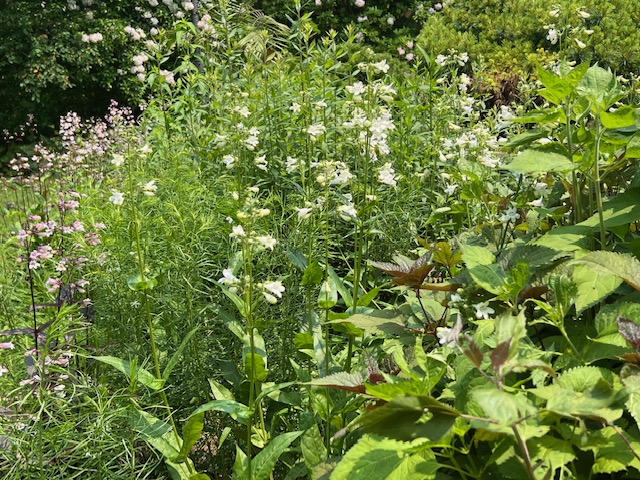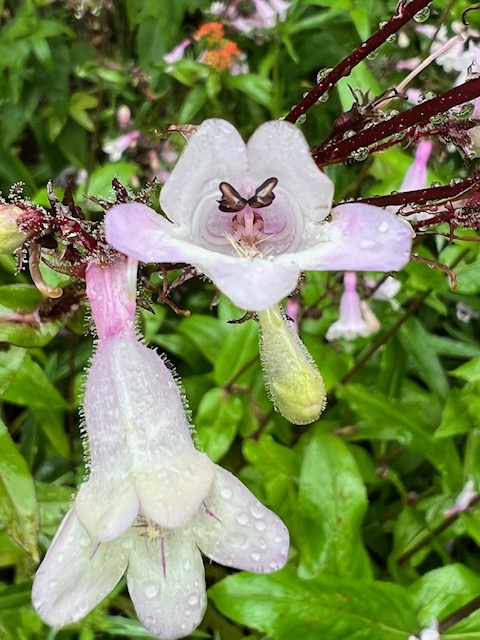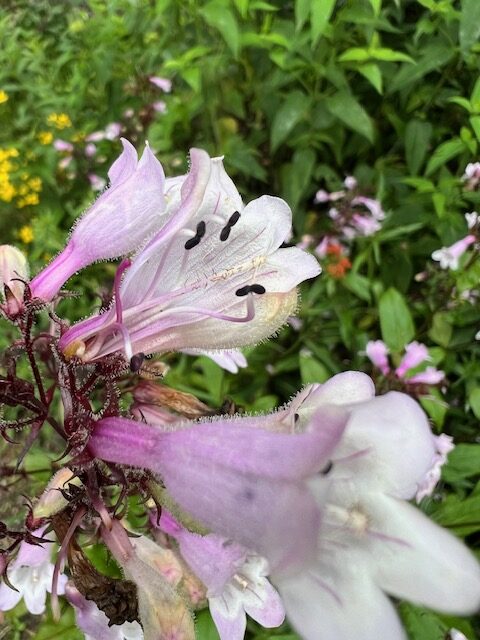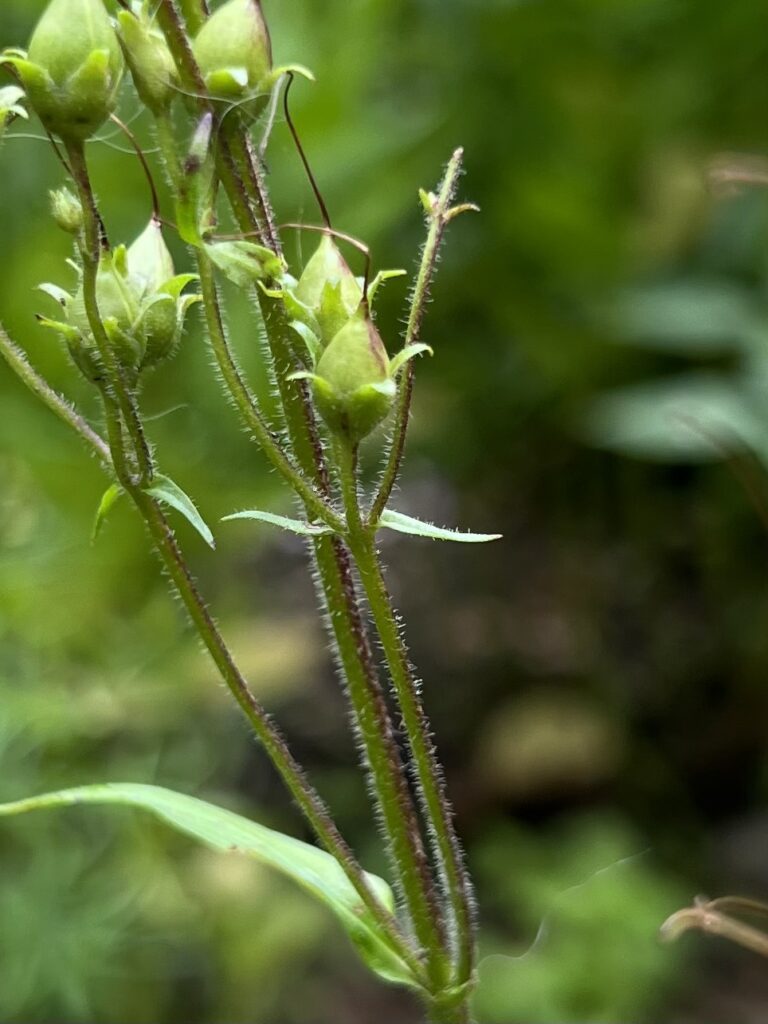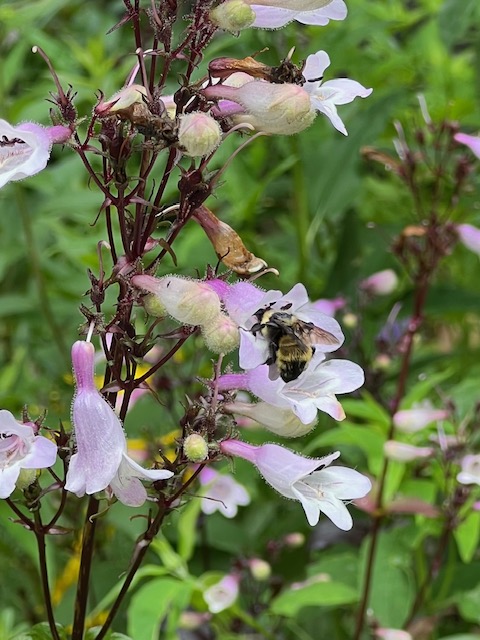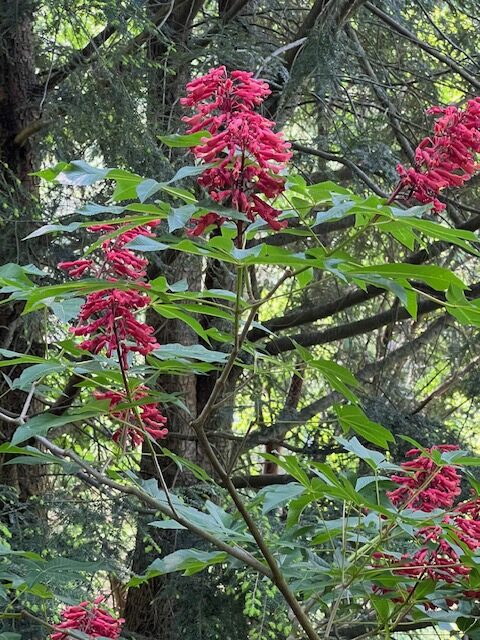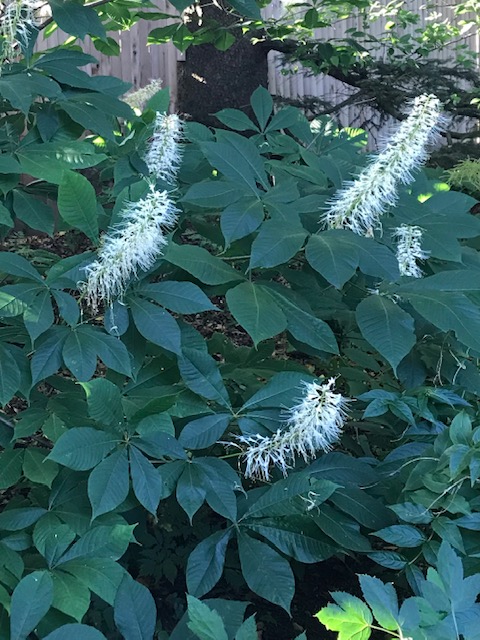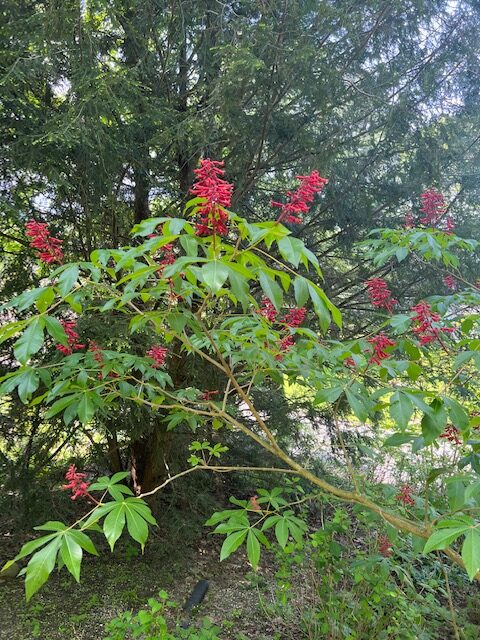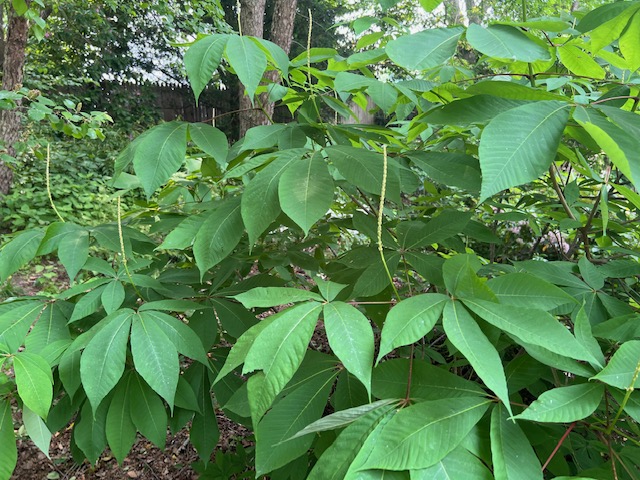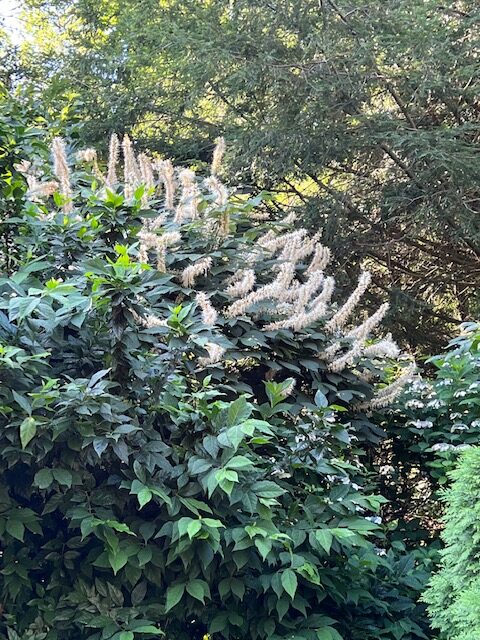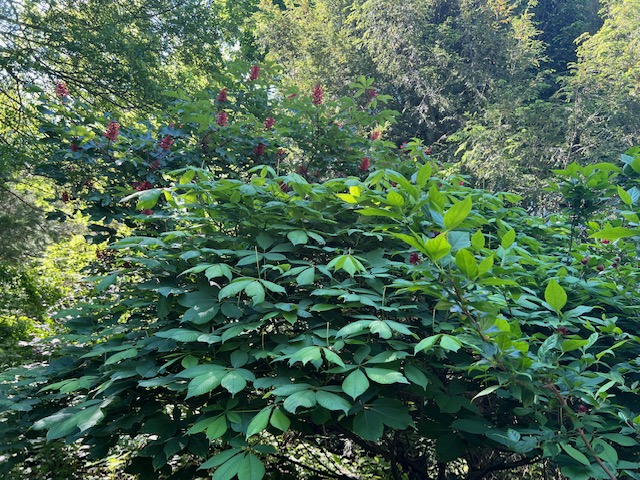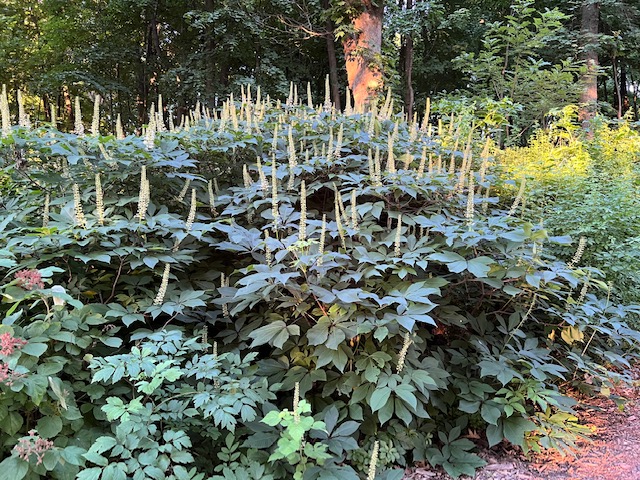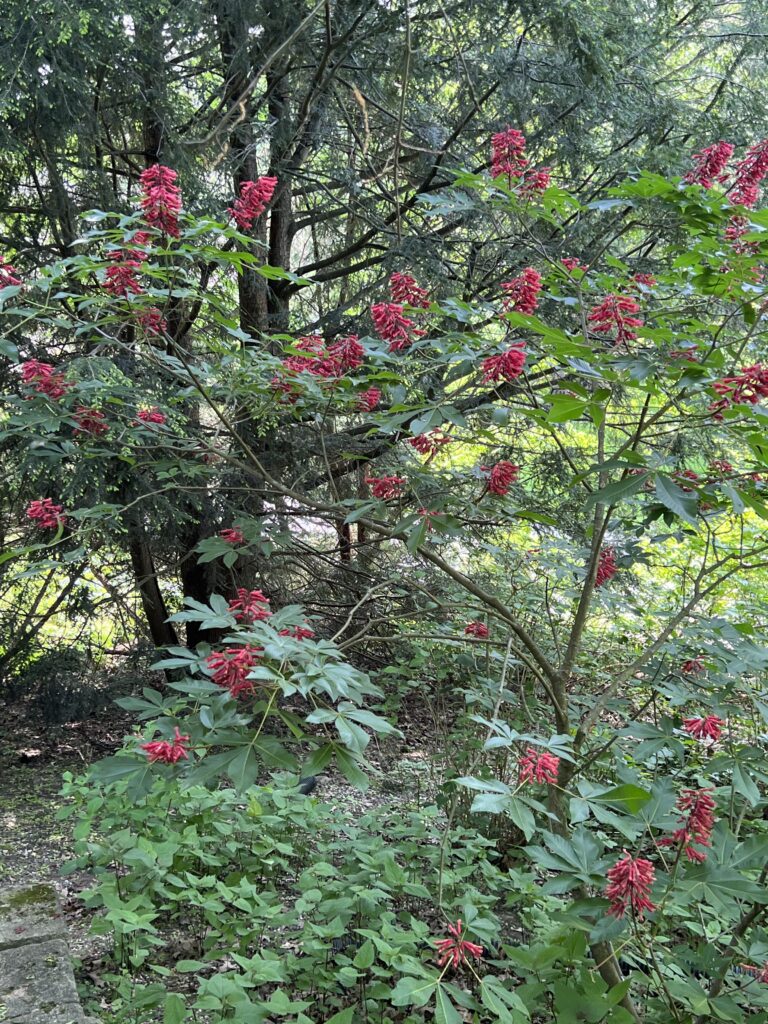Great Blue Lobelia (Lobelia siphilitica) is a quirky plant.
It is undeniably beautiful, with spikes of blue-violet flowers, 2 to 3 feet tall, blooming at summer’s end. It is adored by bumblebees, host to several species of butterflies and moths, and frequently visited by hummingbirds.
But you never know where it’s going to pop up!
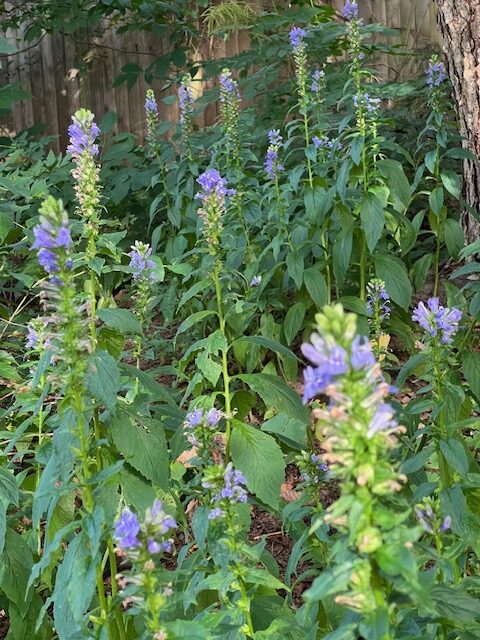
Great Blue Lobelia is native to wet meadows in the Eastern half of the US from Maine to Georgia and west to Colorado and Texas. It is not truly perennial since the flowering stem and its roots die off after forming seeds. But in a favorable location, Lobelia seeds itself around — enthusiastically! — to maintain a perennial-like presence.
Lobelia seeds are tiny, like brown dust, which accounts for their easy dispersal. Whether they are carried by wind, water, animals, or even human footsteps is not entirely certain, but they seem to need open soil, moisture, and sunlight to develop into flowering plants.
Each plant begins as a semi-evergreen rosette, a circular cluster of leaves close to the ground. You may not even notice it until it begins to send up stalks in mid-summer with 2 to 3-inch-long pointed leaves. Then, in late August, the flowers begin to open sequentially from bottom to top. In a wooded area, the effect of the blue flowers is cool and soothing. In full sun, the display is a show-stopper!
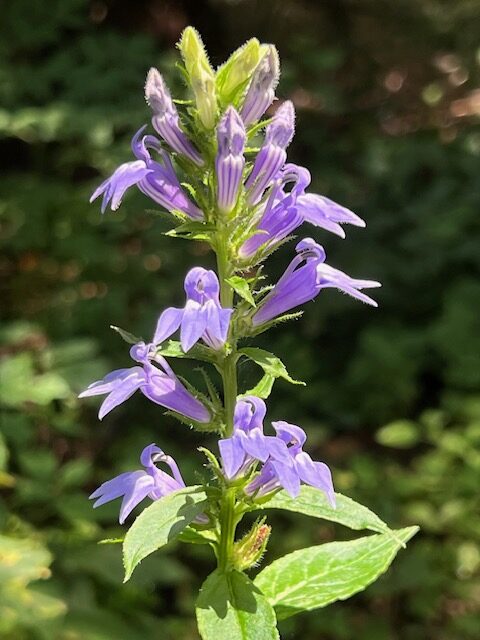
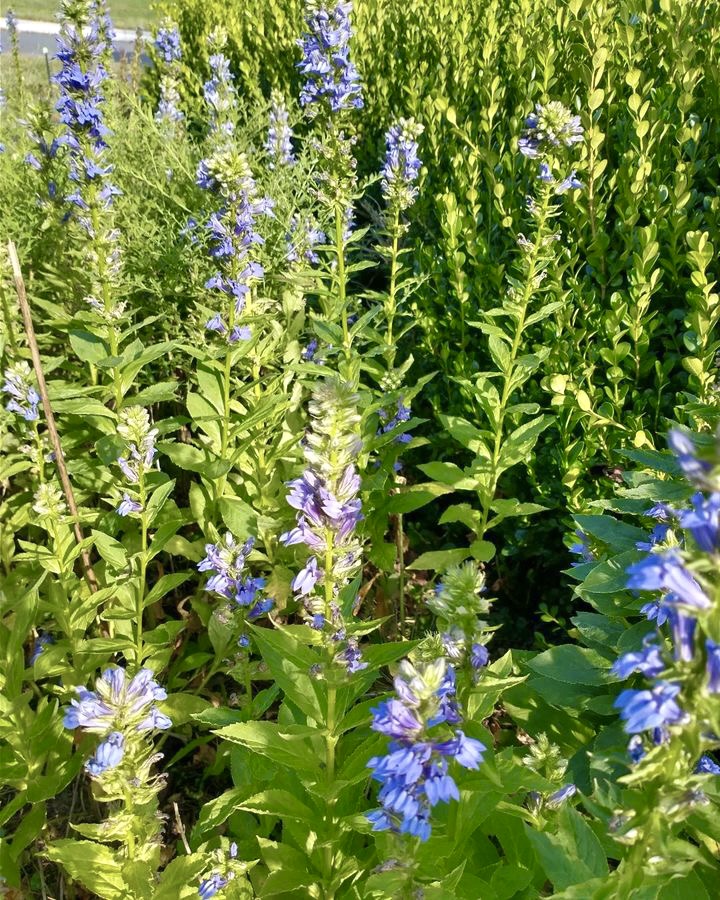
Photo: Cary Maish Brodie
Like its sister plant Lobelia cardinalis, Great Blue Lobelia needs moisture. In a wet summer, Lobelias can surprise gardeners by appearing in large numbers where they were not intentionally planted and never appeared before! (See “How Did That Get Here?” about the red Lobelia, Cardinal Flower). The plants do well in sun or part shade in Zones 3 to 9 in average soil. They are perfect along streams and ponds, and can even survive occasional standing water, but not drought.
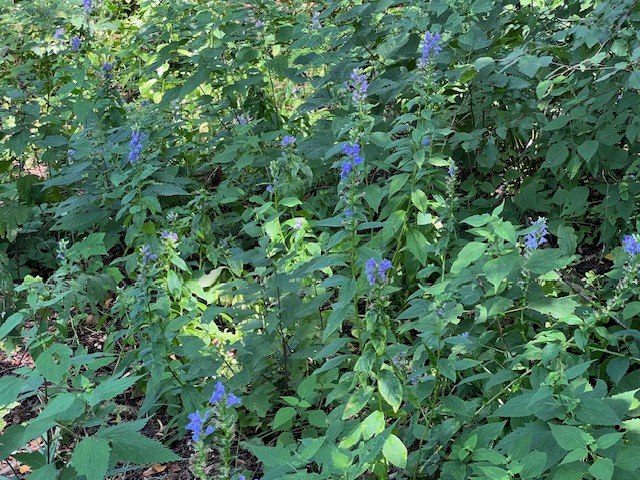

Photo: Cary Maish Brodie
But most of us are happy to see Lobelia pop up wherever it chooses. As summer fades to fall, the flowers are more than welcome and pollinators are happy to have nourishment before the weather turns.

The odd history of Great Blue Lobelia adds to its eccentricity. As the scientific name Lobelia siphilitica suggests, the plant was once thought to be a cure for syphilis. Native Americans used the plant’s roots and leaves to treat coughs, nosebleeds, headaches, and colds. If they used it at all to treat syphilis, it was mixed with a complex concoction of multiple herbs. Nevertheless, Europeans began using it as a syphilis remedy in the mid-1700’s when Sir William Johnson, Britain’s appointed Indian agent, bought it from enterprising local herbalists and sent it back to England as the natives’ “secret” cure. Sadly, in 1818, William Barton’ s book, Vegetable Materia Medica of the United States, concluded that despite trying the treatment in every favorable circumstance, “physicians of eminence” had found it to be ineffective against syphilis. Today, we know that Lobelia siphilitica contains a variety of toxic alkaloids similar to nicotine that can cause vomiting and other adverse reactions.

While Great Blue Lobelia may not be a cure for its Latin namesake disease, it is very effective for brightening our late summer landscapes and supporting native wildlife.
So, we still prescribe it!

